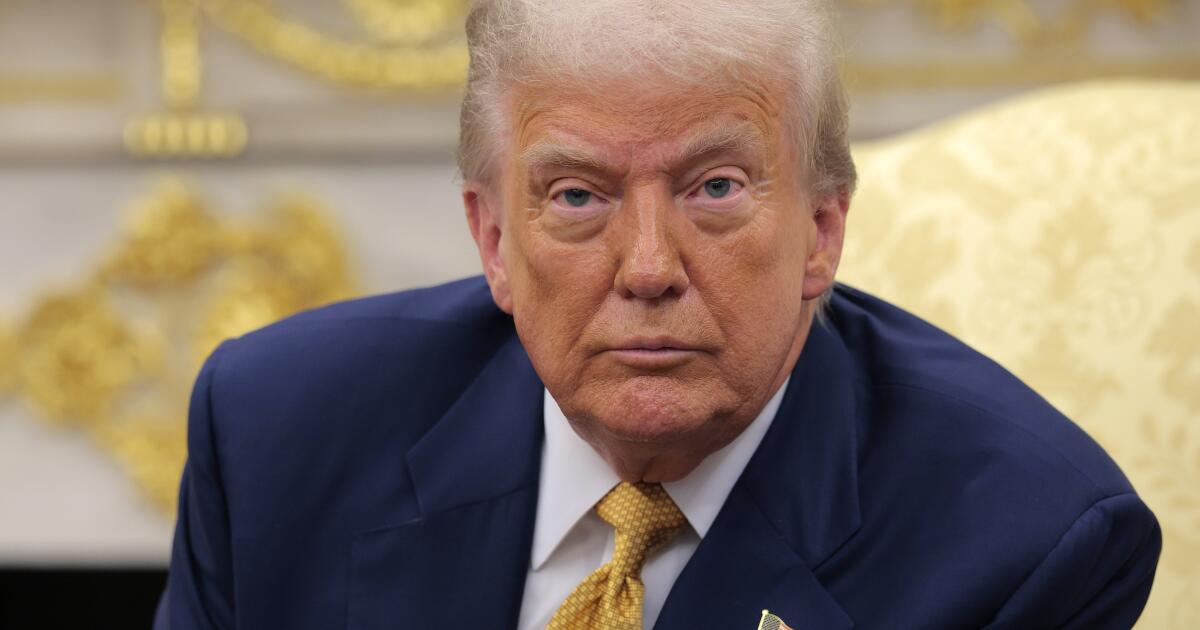Supreme Court could reverse protections for independent agency officials
WASHINGTON — The Supreme Court said Monday it will decide on reversing a 90-year precedent that has protected independent agencies from direct control by the president.
The court’s conservative majority has already upheld President Trump’s firing of Democratic appointees at the National Labor Relations Board and Merit Systems Protection Board. And in a separate order on Monday, it upheld Trump’s removal of a Democratic appointee at the Federal Trade Commission.
Those orders signal the court is likely to rule for the president and that he has the full authority to fire officials at independent agencies, if Congress said they had fixed terms.
The only hint of doubt has focused on the Federal Reserve Board. In May, when the court upheld the firing of an NLRB official, it said it decision does not threaten the independence of Federal Reserve.
The court described it as “a uniquely structured, quasi-private entity that follows in the distinct historical tradition of the First and Second Banks of the United States.” Trump did not share that view. He threatened to fire Federal Reserve Chair Jerome Powell during the summer because he had not lowered interest rates.
And he is now seeking to fire Federal Reserve Governor Lisa Cook, a Biden appointee, based on the allegation she may have committed mortgage fraud when she took out two home loans in 2021.
Trump’s lawyers sent an emergency appeal to the Supreme Court last week seeking to have Cook removed now.
Long before Trump’s presidency, Chief Justice John G. Roberts had argued that the president has the constitutional power to control federal agencies and to hire or fire all officials who exercise significant executive authority.
But that view stands in conflict with what the court has said for more than a century. Since 1887, when Congress created the Interstate Commerce Commission to regulate railroad rates, lawmakers on Capitol Hill believed they had the authority to create independent boards and commissions.
Typically, the president would be authorized appoint officials who would serve a fixed term set by law. At times, Congress also required the boards have a mix of both Republican and Democratic appointees.
The Supreme Court unanimously upheld that understanding in a 1935 case called Humphrey’s Executor. The justices said then these officials made judicial-type decisions, and they should be shielded from direct control by the president.
That decision was a defeat for President Franklin Roosevelt who tried to fire a Republican appointee on the Federal Trade Commission.
In recent years, the chief justice and his conservative colleagues have questioned the idea that Congress can shield officials from direct control by the president.
In Monday’s order, the court said it will hear arguments in December on “whether the statutory removal protections for members of the Federal Trade Commission violate the separation of powers and, if so, whether Humphrey’s Executor v. United States, 295 U. S. 602 (1935), should be overruled.”
Justice Elena Kagan has repeatedly dissented in these cases and argued that Congress has the power to make the law and structure the government, not the president.
Joined by Justices Sonia Sotomayor and Ketanji Brown Jackson, she objected on Monday that the court has continued to fire independent officials at Trump’s request.
“Our emergency docket should never be used, as it has been this year, to permit what our own precedent bars,” she wrote. “Still more, it should not be used, as it also has been, to transfer government authority from Congress to the President, and thus to reshape the Nation’s separation of powers.”

